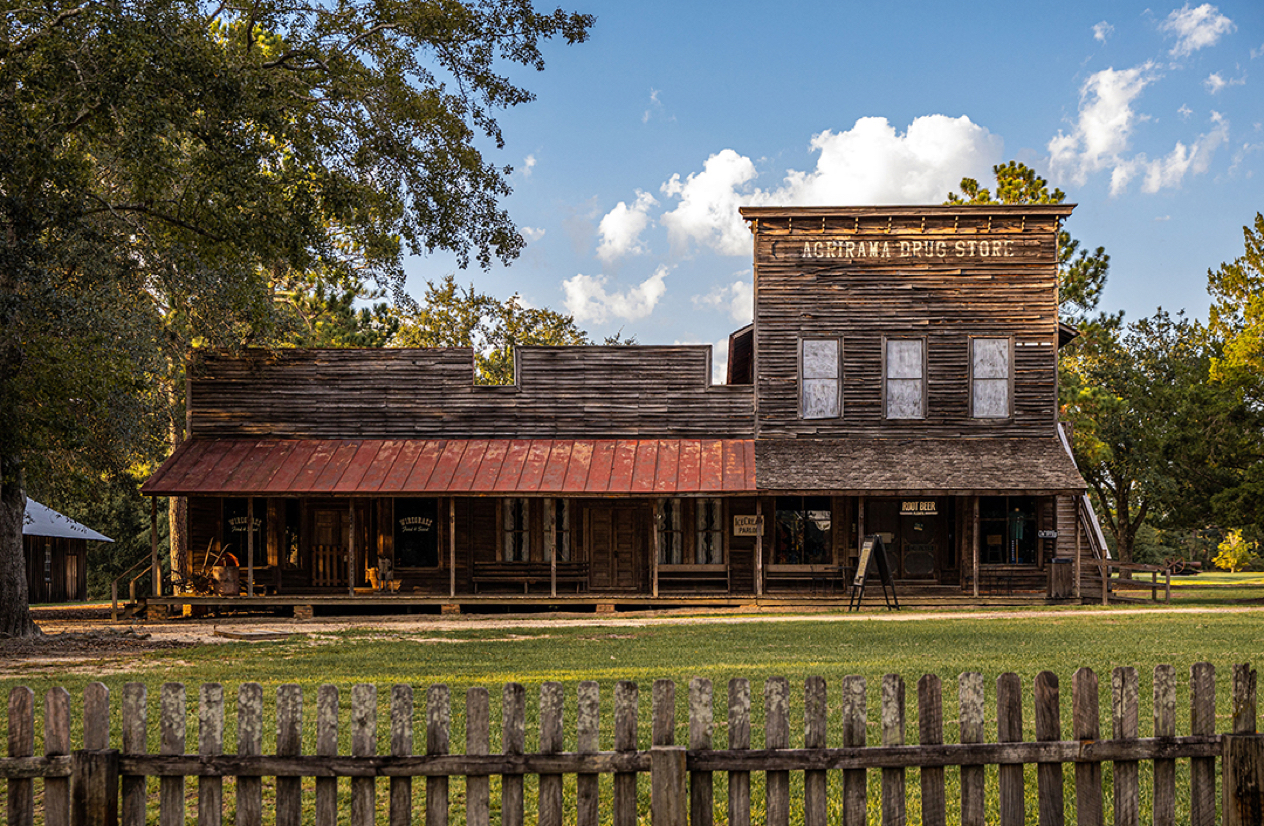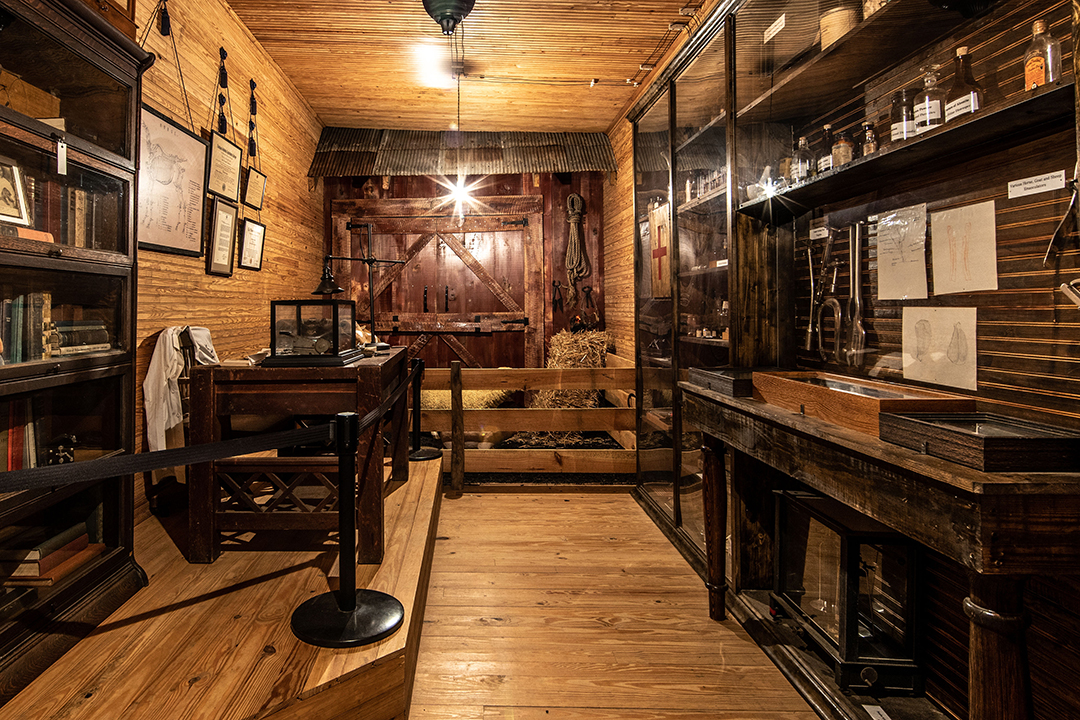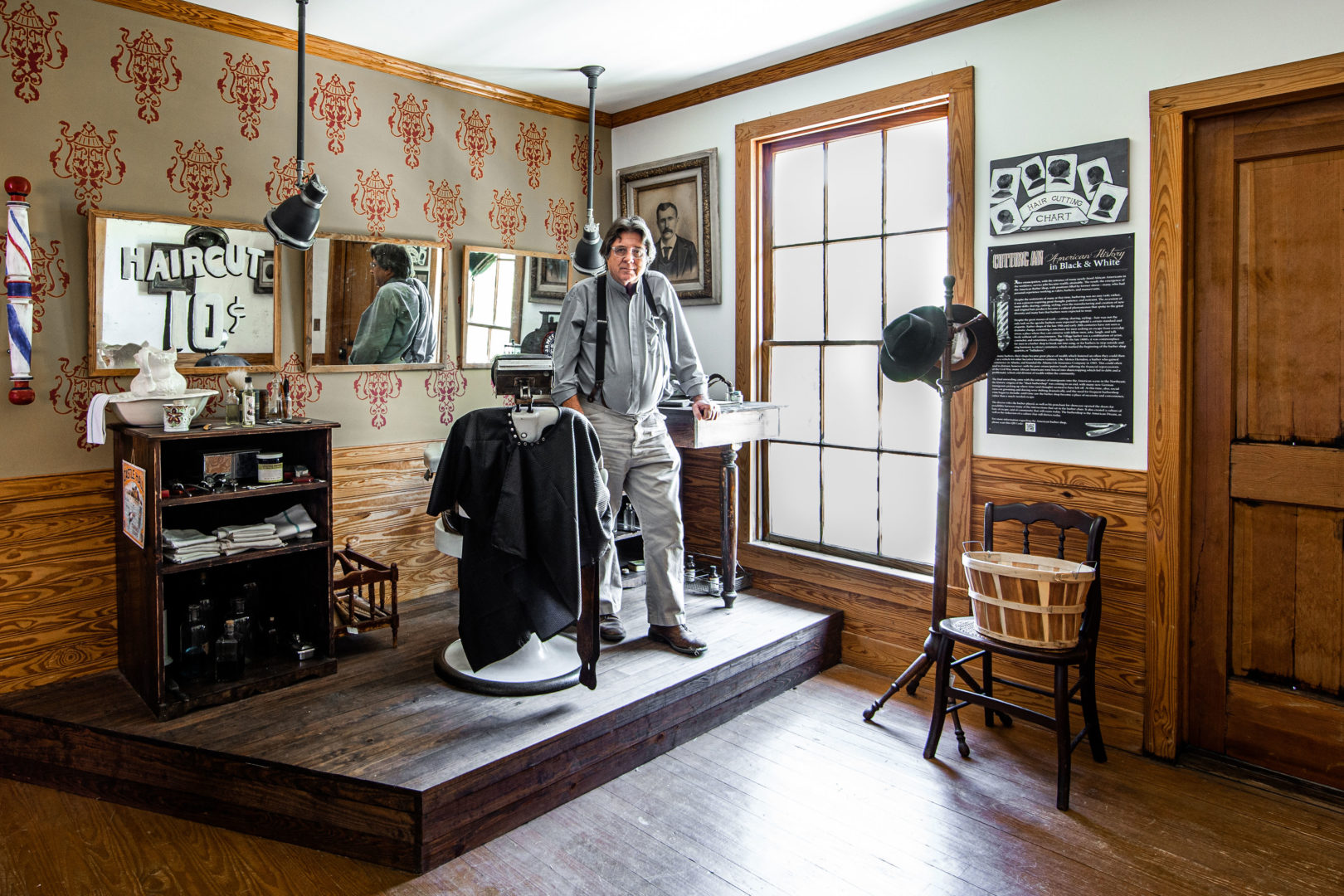Guest Experiences May Include
Social interactions; Needs and Wants activity; Cash vs. credit systems

Main Street highlights independent stores, like the Feed and Seed, which are owned by an individual and thus operated differently from company owned stores such as the Commissary in a mill town.
Social interactions; Needs and Wants activity; Cash vs. credit systems
Communication including business, industry, and social interactions; Operation and uses of printing presses on-site; Printing demonstrations; Party line telephone demonstrations
Cash vs. credit systems; Advancements and uses of electricity; Seed identification and processing

Veterinary advances
Workings of a professional building, multiple businesses under one roof; Goods and services provided ; Advancements and uses of medicine, products, electricity in the operation of Drugstores; Cash vs. credit system

For more than 40 years, Judge J.L. Sweat had a secure and substantial position as a member of the Georgia Bar. Born September 21, 1847, he lived in Ware County, Georgia for the greater part of his legal career. His career was not only one of unusual length but of a variety of experiences. His professional life and his family legacy are the subject of this two-room exhibit located in the upstairs area of the Drugstore. The exhibit was funded in full by the Sweat Family.
Advancements in technology; Class and social order discussions; Government

Located above the Drug Store adjacent to the Lawyer’s Office, the Barber Shop exhibit represents an early 20th Century Barber Shop and is populated with hundreds of artifacts dating back to the 1800s and stretching into the early 1900s.
Barbering demos
